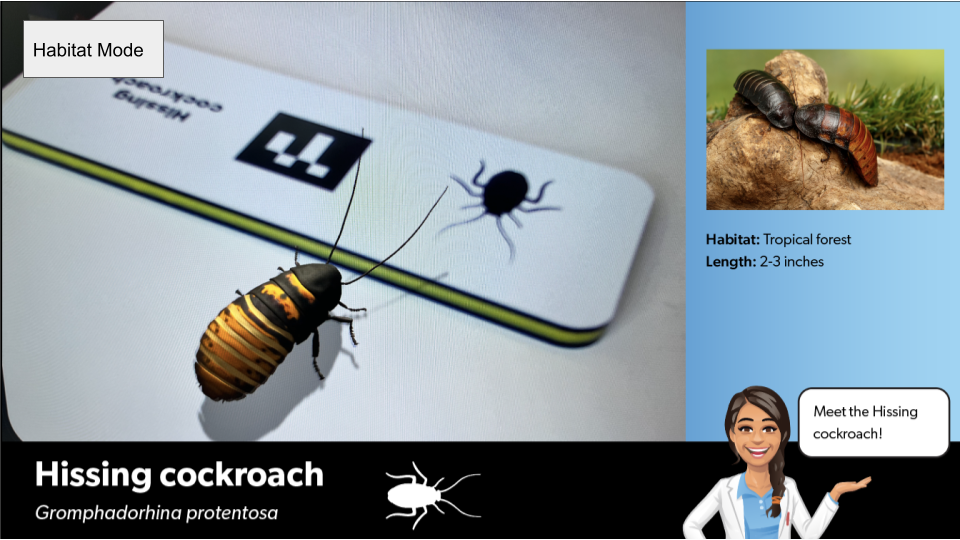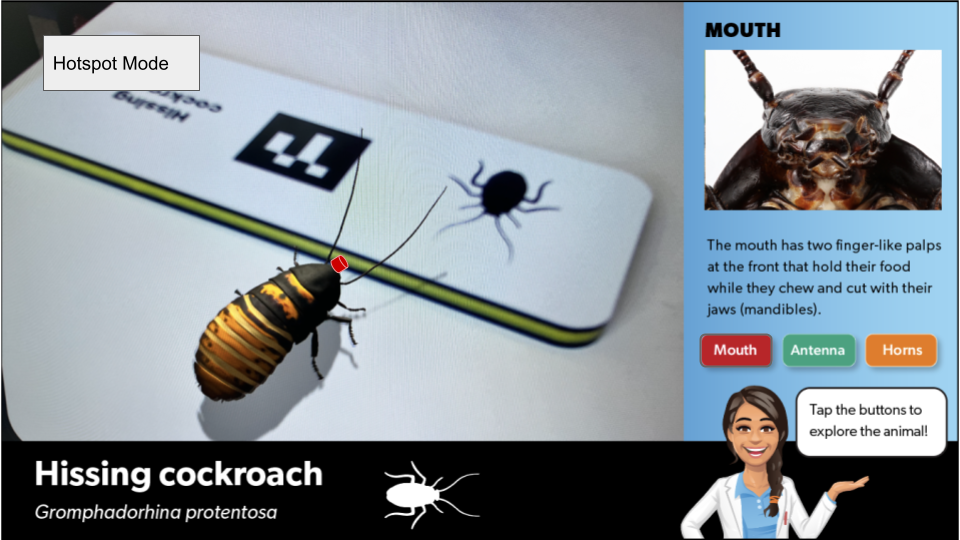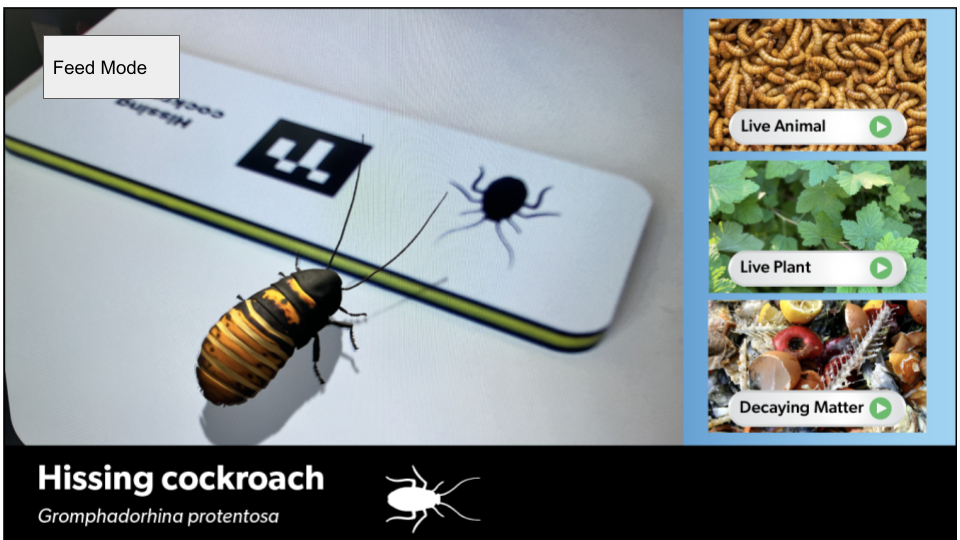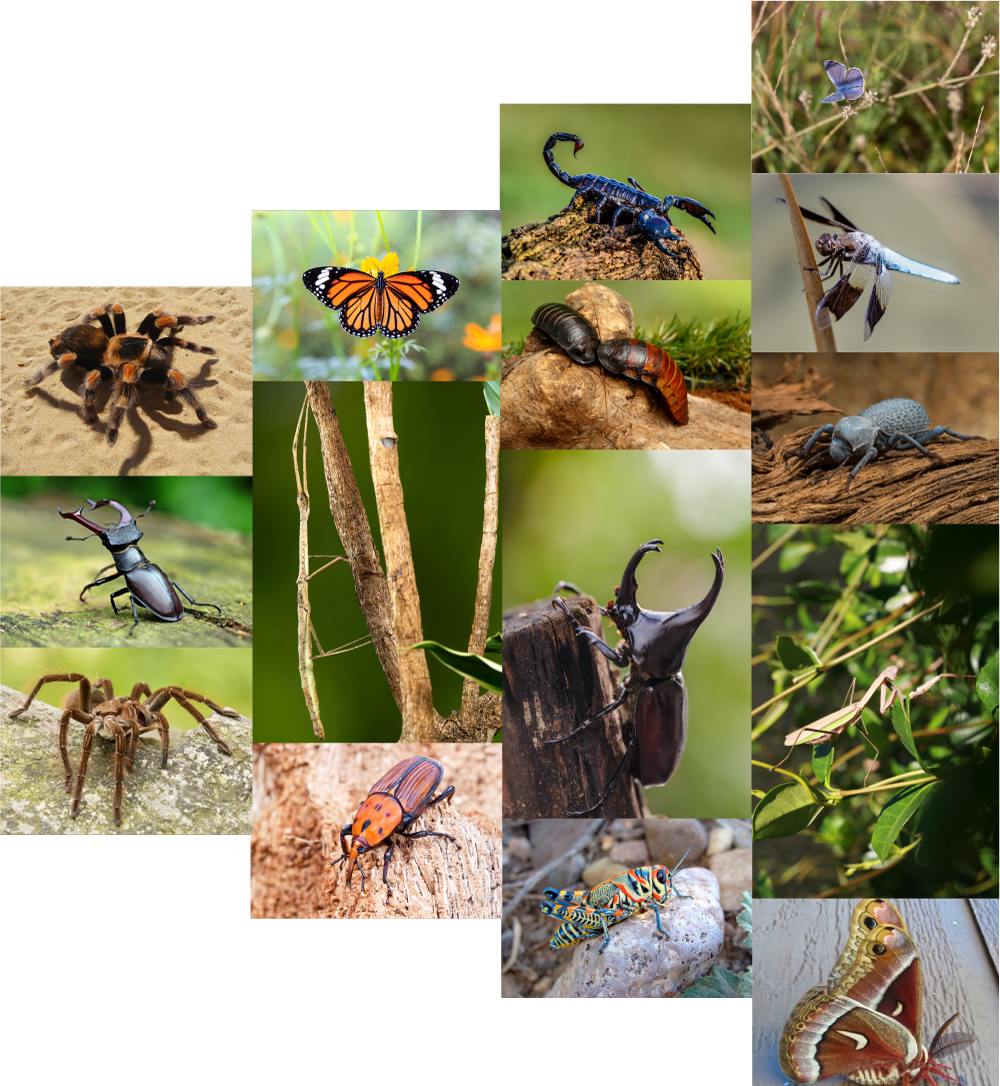This study investigates the impact of an augmented reality (AR) exhibit, Bugtopia, on family learning conversations at The Lawrence Hall of Science. Bugtopia was designed to allow visitors to interact with 3D models of animals, aiming to engage intergenerational (adult-child) groups. The study included observations and interviews with nine adult-child dyads. Findings suggest that AR enhances engagement and educational experiences, providing a dynamic learning environment that encourages collaboration, active participation, and addresses misconceptions. The study highlights the potential of AR in museums and science centers to support interactive and immersive learning, and suggests further exploration into gender differences in engagement and learning preferences.

Augmented Reality (AR) is an exciting and engaging technology with many educational applications, yet how best to use it to engage visitors in the context of museums and science centers (hereafter referred to collectively as “museums”), and particularly intergenerational visitor groups, is not yet well understood. Since most museum visitors are in family or intergenerational groups, museum exhibit designers are interested in ways to engage visitors of different ages and interests to support their learning[1]. Researchers at the Lawrence Hall of Science wondered how we might use AR to support intergenerational learning in museum spaces. We received a grant from the Institute of Museum and Library Services to investigate the affordances and limitations of AR for supporting family learning conversation. This study is the final component of that work, which began with a literature review synthesizing best practices in using AR to support family learning, and the development of the Bugtopia exhibit based on what was learned. Bugtopia was designed by an interdisciplinary team of researchers, learning designers, exhibit production staff, a creative technologist, and consultation with UC Berkeley’s Essig Museum of Entomology. The aim of the present study was to investigate how Bugtopia supports family learning.
The Bugtopia AR exhibit enables families to observe and learn about what we call “bugs” (but are in fact animals) in an interactive way. Visitors can engage with the exhibit in small groups to investigate 3D models of the animals, and discover what each one eats in the wild. To use the exhibit, visitors choose one of 15 cards, and place it in the “terrarium” play space, where a camera detects a unique QR code to identify the animal. Above the terrarium, a screen shows a 3D animation of the animal overlaid onto a live camera feed of the terrarium place space. The animation responds to visitors’ inputs including offering food or moving the card to change the position of the animal.



The exhibit features a guide character who asks questions to prompt visitor inquiry and shares information about each of the animal’s features and behaviors. Beginning with an initial “start mode,” the character invites visitors to make observations of the animal (“What do you notice about this animal?”). The exhibit then transitions into “Discover mode,” which highlights three anatomical features of the animal, and invites visitors to learn more via additional interpretive text visible when “hotspots” are selected (“Tap the buttons to learn more”). Next, the exhibit transitions into “Feed mode” where the character prompts visitors to select a food choice for the animal (“What do you think it eats?”). When the wrong food choice is selected, visitors are prompted to try again. When the correct food choice is selected, visitors are presented with a real-life video of the animal eating, along with audio narration providing additional information about their diet. This concludes the experience with a single animal, and visitors can select a new card to repeat the exhibit experience with a new animal. While the exhibit will progress through each of the modes after a certain amount of time spent in each mode, visitors also have the option to select the other modes at any time via a menu button that stays on the screen.

We use the word 'bug' in the exhibit name, but all the critters are actually animals. The Animal Discovery Zone (ADZ) at the Lawrence Hall of Science is a wonderful place to learn about animals—they have more than 20 different vertebrate species and 10 different invertebrate species—however, they aren't always visible or active in their enclosures. For this reason, Bugtopia offers opportunities for visitors to engage with animals more closely. We used several criteria to decide which animals to include in Bugtopia. First, we focused on animals that were native to the California/San Francisco Bay Area region to ensure a local connection and familiarity. We also sought animals with visually striking features, aiming to captivate the visitors’ attention through their distinctive appearances. We also looked to see which animals were available in the ADZ collection so that we could foster connections with the real life animals, and the Essig Museum collection, so that we could take close up photos of the specimens. Additionally, we considered a range of animals that might appeal to different genders to promote inclusivity. Lastly, we looked for animals with intriguing or unexpected dietary habits, to add an extra layer of interest and surprise. Our final selection was informed by visitor feedback about which animals they found most interesting during prototyping sessions.
“Backyard Zoo” is a display-based exhibit located in close proximity to Bugtopia. It is a multisided kiosk with 4 sides, each displaying a different terrarium with live invertebrates that are rotated periodically, including cockroaches, stick bugs, sow bugs, and blue-death-feigning beetles. Above the terrarium are interpretive signs with more information about the animals, and guiding questions. In these ways, Backyard Zoo is an example of a more traditional, display-based museum exhibit. Given that Bugtopia and Backyard Zoo contain many of the same animals, it served as an opportunity for participants to experience exhibits with common learning aims but in traditional and AR formats.
Son |
Daughter |
Parent total |
|
|---|---|---|---|
Mother |
1 |
3 |
4 |
Father |
4 |
1 |
5 |
Child Total |
5 |
4 |
9 |
We recruited study participants through the Lawrence Hall of Science newsletter. Nine adult-child dyads participated in the study. Children ranged in age from 7-11 years old, with five children who identify as boys and four as girls. Four mothers and five fathers participated. The gender combinations of the adult-child dyads is included in Table 1.
We video recorded the dyads as they engaged with the AR exhibit (Bugtopia) and the nearby non-AR exhibit (Backyard Zoo). Afterward, we interviewed them about their experiences and audio recorded the conversations. They were asked questions like:
We transcribed the video recordings and a team of 3 researchers coded the transcripts for learning talk, defined in Table 2 below. For the coding scheme, we drew on prior work by Sue Allen (2003) which characterized 5 categories of learning conversations that take place among visitors at science museums[2]. We also transcribed the interviews and identified common themes that emerged. This brief summarizes the main findings from our analysis of the interview and observation data and discusses the insights we gleaned from them, as well as their implications for future AR exhibit design.
|
Exhibit Code |
Definition |
|---|---|
|
Perceptual |
Emphasizing a feature, commenting on an observation |
|
Conceptual |
Simple and complex inferences that go beyond what is observed |
|
Connecting |
Making connections to prior knowledge or lived experience |
|
Strategic |
Talk that prompts planning, thinking ahead, and reflection |
|
Affective |
Expressions of emotion |
“The virtual reality was more engaging, kept us there longer…[Bugtopia] was like new and exciting and cool and different.”
- Parent
“It was really interesting because you could see it was moving. It was really realistic, and you could see what it was eating.”
- Child
Both children and adults found the Bugtopia exhibit enjoyable and engaging, with the AR aspect particularly highlighted for its immersive qualities. For instance, one adult shared, “Yeah, I have to say that was fun…the 3D visuals were really cool.” Another adult shared that it was fun to see their child enjoying the exhibit. Participants felt that experiencing the AR was “new,” “exciting,” “cool,” and “different,” indicating that the novelty of AR helped to make the experience enjoyable for both adults and children.
Insights from our observation findings revealed that study participants spent more time at Bugtopia than Backyard Zoo, with an average visit duration of 9 minutes, compared to just 2 minutes at Backyard Zoo—suggesting that the AR exhibit facilitated longer-term engagement.
Insights from observation and interview findings suggest that the use of AR added a layer of excitement and novelty to the exhibit, making the learning experience more engaging compared to traditional display-based exhibits. For exhibit designers, these findings demonstrate that AR can be used to create educational content that is both informative and entertaining.
“I think he liked the feeding part the most. I think that would be my favorite part as well. Guessing what it eats. Cause it tricked me a few times. Thought I knew a lot more about bugs than I actually did.”
- Parent
“I was surprised that some of them ate live animals instead of like rotten food…We thought differently, then we learned that it was a lot different than we thought.”
- Child
The unexpected and surprising elements of the Bugtopia exhibit, such as the incorrect food choices in the feeding mode, were noted as significant learning opportunities. For instance, one adult shared, “Sometimes we got it wrong and then we learned new things. You know, we thought the dragonfly was like this delicate thing.” This aligns with the constructivist learning theory, which suggests that encountering and correcting misconceptions is a powerful learning tool[3].
The exhibit's use of AR encouraged social interaction and collaborative learning. Families and groups were observed discussing and interacting with the content together, indicating that AR can foster a communal learning experience. In particular, interactive aspects of the exhibit, especially the 'Feed mode,' facilitated active learning and collaboration. This aligns with experiential learning theories, which emphasize the importance of active engagement in the learning process[4].
Because AR affords opportunity for interaction and feedback, it lends itself well to learning through countering misconceptions. In our study, both adult and child participants were often surprised when their assumptions about the diets of various insects were revealed to be incorrect. This element of surprise provided a tangible and memorable way for visitors to learn not as passive recipients of information but as active participants in their learning. We noticed that “getting it wrong” did not seem to be frustrating for visitors but rather intriguing for them, particularly in circumstances where both adults and children were surprised by the correct answer. This created genuine moments of social learning for adults and children to engage in together, rather than the adults feeling pressured to have the right answer. We can therefore recommend that other exhibit designers use AR to create a dynamic learning environment where visitors can engage directly with content in a way that challenges their preconceptions and sparks curiosity.
“I think the benefit of having the audio is that it kind of forces the child to hear the facts. And it might be more interesting, more succinct than me reading the paragraph about symbiotic relationships. So, I think [Bugtopia] makes the learning more accessible to children. I think for younger children having the audio and the visual is more engaging. I mean, we spent like multiples of the time, you know, playing with [Bugtopia] as opposed to Backyard Zoo.”
- Parent
“It was fun to feed them. Yeah, to guess what food they ate.”
- Child
| Child | Adult | |||
|---|---|---|---|---|
| Count | Percent | Count | Percent | |
| Start Mode |
57 |
18% |
55 |
15% |
| Feed Mode |
105 |
34% |
110 |
30% |
| Discover Mode |
102 |
33% |
132 |
36% |
Bugtopia incorporated multiple modes (start, discover, and feed), multiple modalities (e.g., visual, tactile, auditory) and a diverse range of bugs. Analysis of interview data suggests that participants appreciated how the different modes and modalities within the exhibit supported various types of conversations about the science content. For instance, the “Feed mode” was particularly conducive to collaboration and discussion between parents and children. The interactive nature of the ‘Feed mode’ prompted participants to guess and learn about the animals' diets, often leading to surprises and correcting misunderstandings, which in turn sparked further inquiry and discussion.
Did Modes Matter? Among the three stages of the game, we observed that the “Feed” and “Discover” modes elicited the most talk for both children and adults (Table 3). Within each mode, children and adults talked roughly the same amount, with children talking slightly more during “Feed mode” and adults talking slightly more in “Discover mode.”
*% of total utterances spoken by adult or child

The variety of bugs, from common to exotic, and the different modes of interaction catered to a wide spectrum of interests and learning preferences, supporting different types of engagement. For instance, interview data revealed that while some visitors were drawn to the visual aspects of the AR, others found the educational content about various bug species more captivating. This underscores the importance of providing multiple entry points for engagement and learning in exhibits, especially when aiming to engage a family audience with varying preferences and learning needs.
Did Bugs Matter? We observed that different bugs elicited varying responses from boys and girls (see figure below). For instance, the dragonfly sparked the most conversation among girls, while the cockroach was more likely to elicit talk among boys. These observations point to an intriguing finding: certain bugs seemed to illicit very different amounts of talk between genders—such as the the stag beetle and the dragonfly—while others did not—such as the grasshopper and butterfly. This suggests that there may be differences in gender appeal based on the specific characteristics or types of bugs presented in the exhibit. This hypothesis presents an interesting avenue for future investigation, where a more gender-focused study could delve into the nuances of gender-based appeal and how this influences learning talk and engagement in a museum setting.

“[At Backyard Zoo] I think we mostly talked about, ‘Are they real? There's one moving.’ So, we were more excited about the things the real animals are doing. And you don't talk about these things once it's a computer screen…[with Bugtopia we talked about] their diet and the body parts and [Backyard Zoo] we just looked at the cockroach, but we didn't read. There was a text about it, I read it to them, but I can't actually remember what it was. That tells you a lot.“
- Parent
“Well, I really liked [Bugtopia] because it had a lot of ideas. It really showed us.”
- Child
Several participants noted that it was enjoyable to see the animals they learned about in Bugtopia “in real life” at the Backyard Zoo exhibit. They also noted that they talked about different things at the two exhibits - with more of a focus on the observations of the real animals in Backyard Zoo, and more interest in deeper learning through text, interaction, video, and audio at Bugtopia. In addition, Backyard Zoo afforded more time for open-ended discussion. For instance, some parents noted that there were certain things they wanted to discuss that they weren’t able to at Bugtopia, in part because the experience was structured to move them along to the next mode rather quickly, which didn’t always leave time for discussion. These findings suggest that AR and “real-life” exhibits have unique affordances that can be complementary to each other.
The excitement about seeing the animals "in real life" at the Backyard Zoo exhibit complemented the virtual experience of Bugtopia which allowed for more in depth learning. This suggests that virtual and physical exhibits can be leveraged to enhance the learning experiences afforded by each when paired together.
We also found that the two exhibits were complementary in the amount of structured vs unstructured dialogue they facilitated. The structured elements of the Bugtopia exhibit, such as the guiding questions, provided a framework for learning conversations that led to more conceptual and affective talk. However, the unstructured nature of the Backyard Zoo exhibit allowed for spontaneous and personal interactions, leading to connecting talk. Therefore, we recommend that exhibit designers aim to create opportunity for both structured and unstructured dialogue.
Observation data revealed that, on average, boys talked more than girls at both Bugtopia and Backyard Zoo. However, we think it’s important to interpret this result in the context of the nature of this study which was limited to a small sample of visitors. Small sample sizes are common in visitor studies that aim to collect more detailed and in-depth data, which can foster a richer, deeper understanding of visitor experiences[5]. However, small samples can also increase the chance of drawing incorrect conclusions, leading to less confidence in the generalizability of the findings. While the sample size of this study is too small for us to make generalizations based on gender, we found this finding particularly striking, given that the Bugtopia design team attempted to make the game appealing for girls in particular by featuring a woman character/narrator, choosing bugs with varied gender appeal, and featuring an animal care component, among other design considerations. Indeed, the inspiration for the project itself was a response to prior studies that have found that parents were more likely to explain science to boys than to girls while using interactive science exhibits in a museum[6]. It’s possible that this finding is reflective of differences in how boys and girls engage at museum exhibits; for instance prior work has found differences in what boys and girls talk about at exhibits at science museums, and that it can vary depending by the exhibit[7]. We think this finding merits further investigation, especially with larger sample sizes.

The two charts below reveal some notable gender-based differences and similarities in the type of talk girls and boys engaged in at each exhibit. The data from the two graphs indicated that perceptual talk, which focuses on observable characteristics and sensory experiences, was the most common type of dialogue among both boys and girls at both Bugtopia and Backyard Zoo. This prevalence underscores the sensory appeal of both exhibits and perhaps the curiosity-driven tendency of children to comment on what they see and experience directly. However, a deeper examination of the data revealed a distinction in the nature of the conversations between genders. A greater proportion of girls’ total talk was conceptual talk, which involves abstract thinking and the exploration of ideas and concepts beyond the immediate sensory experience. This type of dialogue suggests a deeper cognitive engagement with the exhibit content and potentially a propensity to delve into more abstract or theoretical aspects of what they observed. On the other hand, boys exhibited a relatively higher proportion of connecting talk, which involves drawing personal connections and relating personal experiences to the exhibit. This indicates a more experiential and personal approach to the exhibits, where boys often related the exhibit content to their own lives or prior knowledge. These findings suggest that boys and girls may take differing approaches in learning and exploration, and the importance of designing exhibits that cater to a variety of communication and learning opportunities to engage a young audience effectively.


We found both differences and similarities in the type of talk that boys and girls engaged in. However, because of the limitations of our study such as the small sample size, and the fact that few studies have investigated this topic in museum contexts in depth, we are uncertain as to whether the observed differences are related to the exhibits themselves or a larger phenomenon. Nevertheless, this finding suggests the need for museum exhibit designers to be mindful of possible gender differences and strive to create experiences that are equally engaging and educational for all gender identities, perhaps by attending to gender-specific communication preferences. We encourage exhibit designers and museum professionals to further investigate what can be done to ensure that learning experiences are accessible and engaging regardless of gender identity.
This study investigated the benefits of AR for supporting family learning conversation. Study participants indicated that the AR exhibit was an engaging, educational, and enjoyable experience for family learning. The exhibit's design incorporated various modes and modalities, catering to different learning styles and preferences. However, it is important to note that we found differences in the amount of talk between boys and girls, which we think warrants further investigation given the limited sample size of this study which makes it difficult to draw broader conclusions. Nevertheless, the findings from this study contribute valuable insights into the design of future educational exhibits, particularly those that aim to engage family groups in meaningful learning conversations.
This project was made possible in part by The Institute of Museum and Library Services (Grant #MG-40-18-0005-18). The views, findings, conclusions or recommendations expressed in this report do not necessarily represent those of the Institute of Museum and Library Services.
Thank you to the Essig Museum of Entomology at UC Berkeley who provided expert consultation about the bugs, as well as their support and taking microscope photos of them from actual bugs in their collection check out the gallery below.
[1] Yun, S. T., Olsen, S. K., Quigley, K. C., Cannady, M. A., & Hartry, A. (2023). A Review of Augmented Reality for Informal Science Learning: Supporting Design of Intergenerational Group Learning. Visitor Studies, 26(1), 1-23.
[2] Allen, S. (2003). Looking for learning in visitor talk: A methodological exploration. In Learning conversations in museums (pp. 265-309). Routledge.
[3] Smith, J. P., diSessa, A. A., & Roschelle, J. (2009). Misconceptions Reconceived: A Constructivist Analysis of Knowledge in Transition. Journal of the Learning Sciences, 3(2), 115-163.
[4] Kolb, D. A. (1984). Experiential Learning: Experience as the Source of Learning and Development. Prentice-Hall.
[5] Leinhardt, G., & Crowley, K. (1998). Museum learning as conversational elaboration: A proposal to capture, code, and analyze talk in museums. Report available at http://mlc. lrdc. pitt. edu/mlc.
[6] Crowley, K., Callanan, M. A., Tenenbaum, H. R., & Allen, E. (2001). Parents explain more often to boys than to girls during shared scientific thinking. Psychological science, 12(3), 258-261.
[7] Tunnicliffe, S. D. (1998). Boy talk/girl talk: is it the same at animal exhibits?. International Journal of Science Education, 20(7), 795-811.